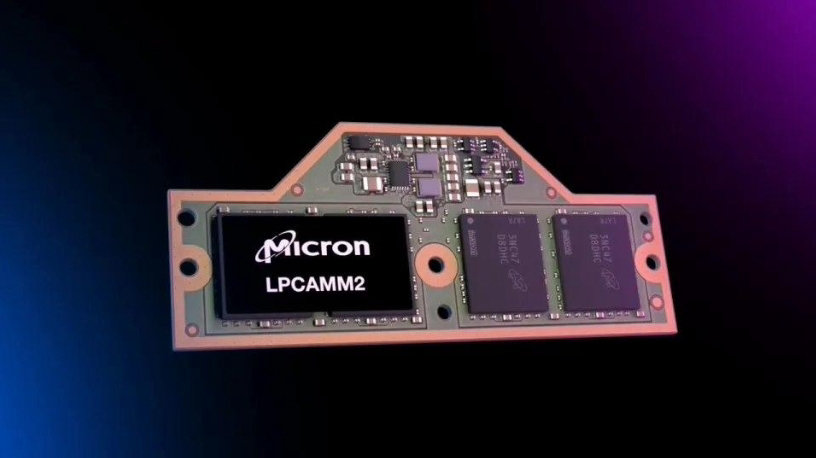Micron launches LPCAMM2 memory module: with a capacity of 16GB to 64GB and a speed of up to 9600MT/s
At this year's Las Vegas CES exhibition, Micron announced the launch of the industry's first standard low-power compressed additional memory module (LPCAMM2), which uses LPDDR5X memory with capacities ranging from 16GB to 64GB, providing higher performance and energy efficiency for PCs, saving more space, and modular design. At present, the LPCAMM2 memory module has been sampled and is planned to be put into production in the first half of 2024. This is the first time since the introduction of SO-DIMM specifications in 1997 that client PCs have introduced a disruptive new form factor.
The new LPCAMM2 memory module can support a data transfer rate of 9600 MT/s, far higher than the 6400 MT/s of DDR5 SO-DIMM. Although LPDDR5X may not perform as well as DDR5 in terms of latency, it can be offset with higher data transfer rates. Compared to the soldered LPDDR5X memory subsystem, the modular design does not increase the latency of LPDDR5X memory.
Micron claims that its LPCAMM module using LPDDR5X memory has reduced its size by 64% compared to SODIMM memory, reduced power consumption by 61%, and improved speed by 71% in PCMark 10 basic performance tests. According to JEDEC, the CAMM2 standard supports both DDR5 memory for mainstream machines and LPDDR5 and LPDDR5X memory for a wider range of laptop and server markets. LPDDR memory is more common in laptops due to its ability to provide high-speed data transmission at low power consumption.
In addition to its advantages in speed and power consumption, the CAMM2 module also gives consumers and IT personnel the freedom to upgrade and repair memory. The only minor drawback is that replacing the module requires tightening a few screws.
Although the name may sound awkward, Micron's technology and other CAMM2 products are likely to be a major breakthrough in laptop memory upgrades. Previously, the JEDEC standardization organization officially released the CAMM2 standard in December last year, while Samsung claimed to have been the first to develop the LPCAMM module as early as September last year.
However, Micron and Samsung's LPCAMM technology are not fighting alone. Dell has been developing an alternative solution called CAMM (Compression Attached Memory Module) in the past few years to address the challenges faced by traditional SODIMM memory. Unlike traditional memory modules, CAMM modules install memory chips directly on the motherboard, taking up less space. Additionally, due to the shorter connection path to the CPU, they have the potential to increase speed and significantly reduce power consumption. Dell tested non-standard CAMM modules on its Precision 7670 laptop in 2022.
Praveen Vaidyanathan, Vice President and General Manager of Micron Computing Products, said, "Micron is changing the user experience of laptop users through the LPCAMM2 product, which will provide the best performance per watt in its class with a flexible modular design. This pioneering product will enhance the functionality of artificial intelligence laptops, and its memory capacity can be upgraded with the development of technology and customer needs."


